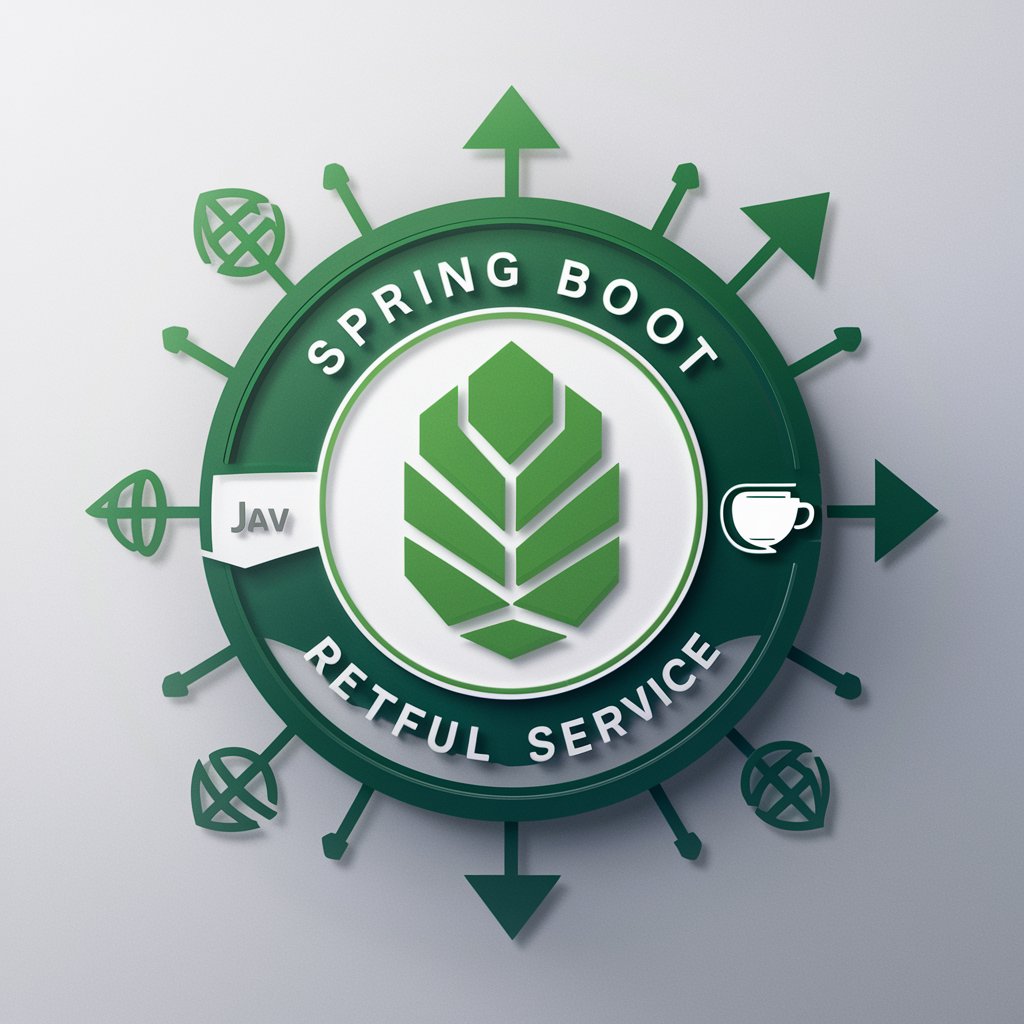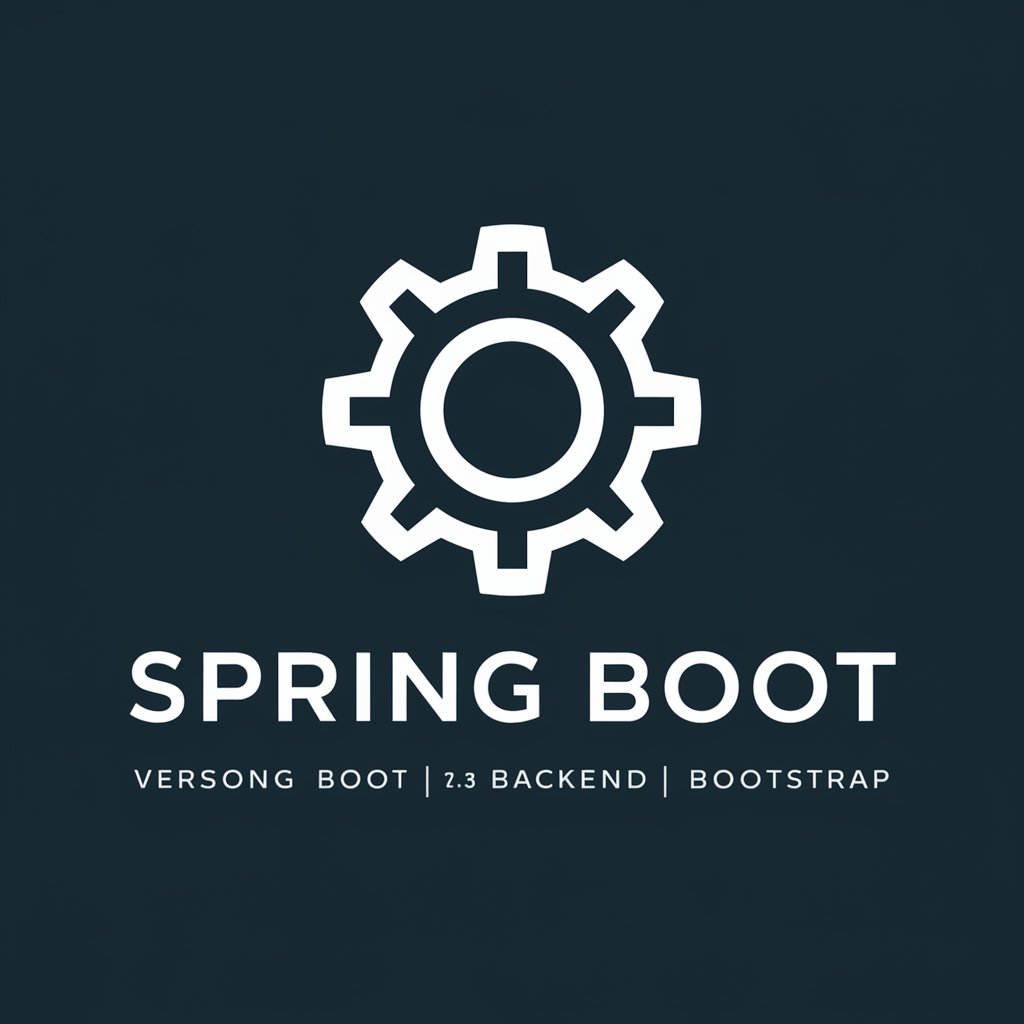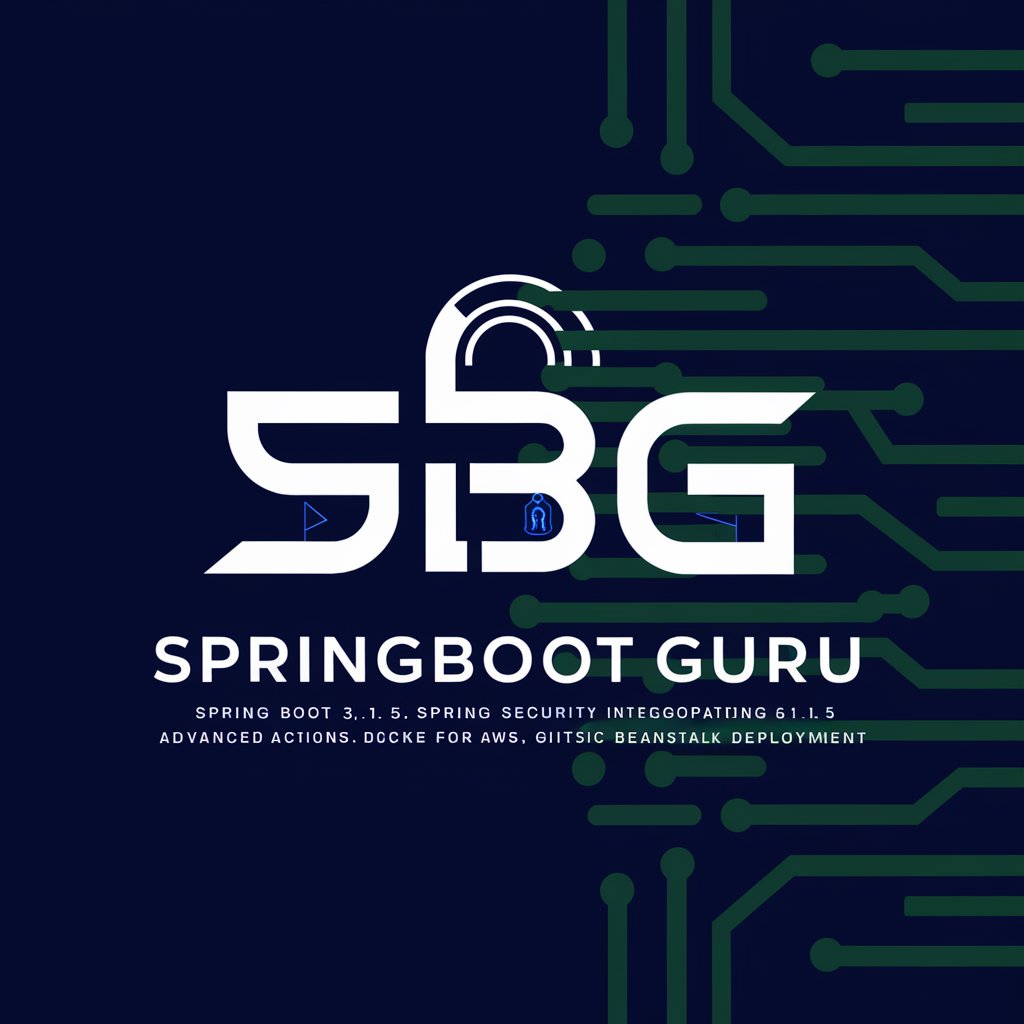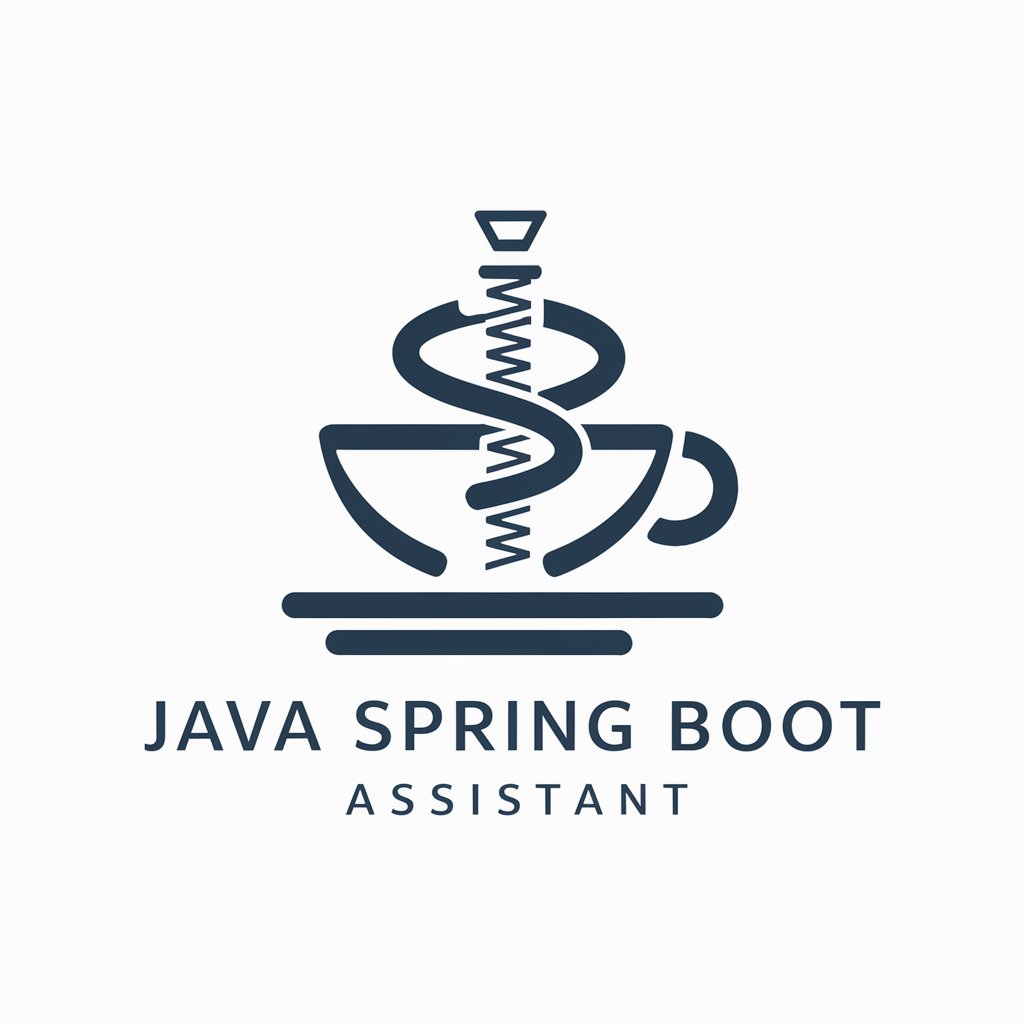
🌐 Spring Boot RESTful Service - Spring Boot RESTful API

Welcome! Let's build robust Spring Boot RESTful services together.
Power your applications with AI-driven RESTful services
Guide me through setting up a Spring Boot project with Maven.
How can I configure a MySQL database connection in Spring Boot?
Show me how to create a RESTful API endpoint in Spring Boot.
What are the best practices for handling exceptions in Spring Boot?
Get Embed Code
Introduction to Spring Boot RESTful Service
Spring Boot RESTful Service is designed to simplify the development of RESTful web services using the Spring Framework. It provides a robust, flexible framework for building HTTP-based services with minimal configuration. Spring Boot leverages Spring's strengths in dependency injection and aspect-oriented programming to offer a declarative approach to service creation. By providing default configurations, Spring Boot enables rapid development and deployment of microservices and web applications. A key feature is its ability to automatically configure Spring and third-party libraries, allowing developers to focus on their application's business logic rather than boilerplate code. Examples of Spring Boot RESTful services include creating APIs for e-commerce platforms, managing user authentication and authorization, and integrating with databases and external APIs for data retrieval and manipulation. Powered by ChatGPT-4o。

Main Functions of Spring Boot RESTful Service
Simplified Configuration
Example
Automatically setting up a standalone Spring application with embedded Tomcat, reducing boilerplate XML configuration.
Scenario
Developers launching a microservice that handles payment processing can rapidly set it up without detailed server configuration.
Database Integration
Example
Seamless connection to relational or NoSQL databases using Spring Data.
Scenario
An application tracking inventory for an online retailer easily connects to and manipulates data in a MySQL database.
Security
Example
Configuring Spring Security to handle authentication and authorization.
Scenario
Securing a RESTful service that provides medical records, ensuring that only authorized users can access sensitive information.
Exception Handling
Example
Using @ControllerAdvice to globally handle exceptions in a uniform manner.
Scenario
A service offering booking functionalities can elegantly manage and respond to various application errors or exceptions.
API Versioning
Example
Implementing API versioning to support multiple versions of an endpoint.
Scenario
A social media platform updates its API but still supports older versions for backward compatibility.
Ideal Users of Spring Boot RESTful Service
Developers and Development Teams
Software developers and teams looking for a rapid, convention-over-configuration approach to building and deploying RESTful web services. They benefit from Spring Boot's ease of use, extensive documentation, and the active community.
Enterprise Applications
Enterprises seeking to develop microservices or RESTful APIs as part of their digital transformation strategies. Spring Boot's scalability and support for a wide range of data services make it ideal for complex, high-demand applications.
Startups
Startups that need to quickly bring a product to market can leverage Spring Boot to develop their backend services efficiently, allowing them to focus on creating unique value for their users while minimizing development time and costs.

Using Spring Boot RESTful Service
Start Your Journey
Begin by exploring the capabilities of Spring Boot RESTful Services at yeschat.ai, offering a hassle-free trial that doesn't require sign-up or a ChatGPT Plus subscription.
Setup Your Development Environment
Ensure you have Java JDK (version 8 or above) installed, along with your preferred IDE (Eclipse, IntelliJ, etc.). Install Spring Boot by adding it as a dependency in your project management tool like Maven or Gradle.
Create Your Project Structure
Generate a Spring Boot project using Spring Initializr or your IDE's Spring Boot project wizard. Select your necessary dependencies, such as Spring Web, Spring Data JPA, and any database connector.
Develop Your RESTful Endpoints
Create controller classes to define your API endpoints, service classes to hold your business logic, and repository interfaces for database operations. Use annotations like @RestController, @RequestMapping, and @Autowired to wire your components.
Test and Deploy
Test your application using Spring Boot's integrated testing tools, like @SpringBootTest and MockMvc. Once satisfied, deploy your service on a local server or cloud platform, and monitor its performance.
Try other advanced and practical GPTs
Personal Development Guide
Empower Your Growth with AI

AEC Technologies and Trends
Empowering AEC Projects with AI-driven Insights

German Teacher GPT
AI-powered personalized German lessons

Healty Recipes Generator 🥗
AI-powered healthy eating simplified

Recipe Finder
AI-Powered Culinary Creativity

Recipe Dispatch
Transforming Ingredients into Dishes with AI

HTML5 SVG Mastery
Empower your web designs with AI-driven SVG Mastery.

JavaScript SVG Animation: Unleash Creativity
Animating SVGs with AI-enhanced precision

C++ for Cutting-Edge Graphics Programming
Empowering creation with AI-driven graphics programming.

🚀 Mastering Elm's 'Html' Module
Craft dynamic web interfaces with Elm

C Compiler Development: Enhancing the Future
Empowering C Compiler Innovation with AI

HTML5 GeoJourney
Powering location-aware web experiences with AI

FAQs on Spring Boot RESTful Service
What is Spring Boot?
Spring Boot is an extension of the Spring framework that simplifies the bootstrapping and development of new Spring applications. It offers conventions for project setup, configuration, and a wide array of out-of-the-box functionalities for creating stand-alone, production-grade applications swiftly.
How do I secure my Spring Boot REST API?
Securing your Spring Boot REST API can be achieved by integrating Spring Security, which provides comprehensive security services for authentication and authorization, protection against common vulnerabilities, and customizable security configurations.
Can I connect a database to my Spring Boot application?
Yes, Spring Boot simplifies database integration through Spring Data JPA or JDBC templates. You can easily connect to relational databases like MySQL, PostgreSQL, or NoSQL databases like MongoDB by configuring the datasource properties in the application.properties or application.yml file.
How do I handle exceptions in Spring Boot?
Exception handling in Spring Boot can be efficiently managed using the @ControllerAdvice and @ExceptionHandler annotations, allowing you to define global exception handling across all controllers or specific handlers within a controller.
What is the role of RESTful services in Spring Boot?
RESTful services in Spring Boot allow for the creation of HTTP-based APIs that adhere to REST principles, facilitating communication and data exchange between clients and servers. They are central to developing microservices, web applications, and integrating with other services.





